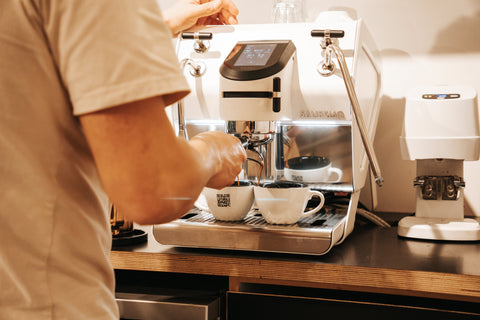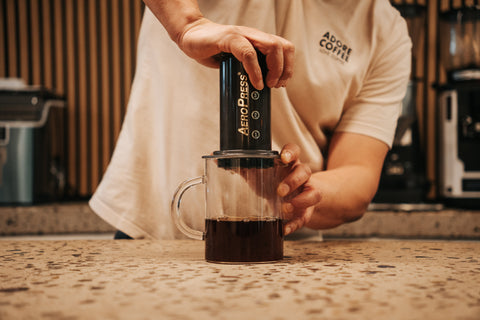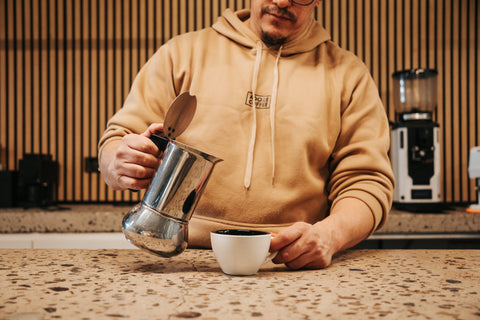To immerse yourself in the authentic Adore espresso experience, gather your freshly roasted coffee beans, your trusty espresso machine, a precise grinder, portafilter, digital scale, and your favourite cup.
Choosing Your Coffee Beans: The roast date on your beans matters. Use beans roasted at least a week ago - coffee that has been roasted too recently will have a lot of excess carbon dioxide inside of the beans trapped during the roasting process, and this extra pressure will mess up your extraction. After 3-4 weeks, the beans start declining in their prime flavour profile.
The Art of Espresso Brewing:
- Weigh out coffee grounds for your basket size. A standard basket holds 22 grams of coffee, with some domestic machines having smaller baskets. Start with a fine grind and be ready to make changes based on the results.
- Fill your portafilter and give it a gentle sideways tap. This ensures an even bed, important for preventing channelling where water passes through the coffee unevenly.
- Use a tamp to compress the coffee grounds, pressing down with your body's weight. The goal is to compress the puck to ensure there are no air pockets.
- Lock your portafilter into the group head and initiate extraction. With 22 grams of grounds, aim for approximately 42 grams of liquid in about 28 seconds. Adjusting your grind affects how long the shot takes: coarser grind will come out quicker, finer grind will take longer.
- Sip your espresso. If it's sour, it might be under-extracted, requiring a finer grind. If it's bitter, it might be over-extracted, so try a coarser grind.
After your espresso escapade, ensure you remove all coffee grounds from the portafilter and start a blank shot through the machine. This clears any lingering residues and sets you up perfectly for your next brew.
Advanced Brewing Tips:
- There's a lot of trial and error when brewing espresso! Your beans, small differences in grind, even the temperature and how much you've recently used your grinder will affect the end result. Don't be afraid to experiment, over time you'll get familiar with how your espresso changes with your environment.
- If your machine allows, set the PID between 91 and 94 degrees Celsius. Lighter roasts might benefit from a slightly hotter temperature, while darker roasts should be brewed with a lower temperature.
- Home brewers canconsider a WDT tool for breaking up coffee clumps in your grounds, ensuring an even extraction.
- Similarly, a puck screen can help a lot for domestic machines. This improves water distribution for more uniform extraction.
Embrace each step, refining your technique with each brew. Espresso is as much an art as it is a science, and while it can be tough the end result is definitely worth it. Happy brewing!



Comments (0)
There are no comments for this article. Be the first one to leave a message!